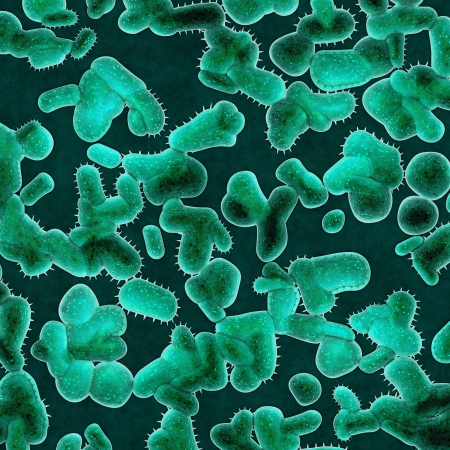1. Introduction: Our Guts, Our Years
It might sound a little wild, but the secret to living longer may start deep inside your gut. In recent years, “gut health” has gone from a nerdy science topic to a headline-grabbing wellness trend across America—whether you’re scrolling through Instagram or sitting in your doctor’s office in New York or LA. What’s all the buzz about? It turns out that our intestines are home to trillions of bacteria and other microbes, collectively known as the microbiome, and research is showing they do much more than help us digest tacos or kale salads. These tiny residents shape how we age, influence everything from our immune system to our mood, and might even hold clues for adding healthy years to our lives. As Americans get more curious about the link between what goes on in their gut and how they feel day-to-day, gut health has become a hot topic everywhere from wellness blogs to big-city health clinics—and it’s changing how we think about aging itself.
2. Meet the Microbiome: Nature’s Tiny Team
Imagine trillions of microscopic life forms working together in your gut—a bustling city of bacteria, fungi, viruses, and other microbes. This ecosystem is known as the gut microbiome, and it’s one of the most important, yet overlooked, players in our journey through life. The “residents” of your microbiome aren’t just passersby; they are long-term tenants influencing everything from digestion to mood. As we age, these tiny teammates become even more crucial to our health story.
The Main Players in the Microbiome
| Microbe Type | Main Functions | Fun Fact |
|---|---|---|
| Bacteria | Break down food, produce vitamins, regulate immune system | There are more bacterial cells in your body than human cells! |
| Fungi (like yeast) | Help with digestion, compete with harmful bacteria | Candida is a common gut fungus—too much can be trouble! |
| Viruses (bacteriophages) | Infect and control bacteria populations | Bacteriophages only target bacteria, not human cells. |
| Other microbes (archaea, protozoa) | Support fermentation and nutrient absorption | Archaea help reduce gas by breaking down certain foods. |
The Microbiome’s Role Across the Years
Scientists now know that the microbiome isn’t static—it changes as we do. In childhood, it helps train our immune system. By adulthood, it supports everyday functions like digesting fiber or producing serotonin (the “feel-good” chemical). As we age, shifts in our microbial balance can affect how well we absorb nutrients or fight off illness. Recent research even links a healthy microbiome to sharper thinking and fewer mood swings later in life.
The Science Behind Gut Health and Aging
A growing body of studies shows that diversity in our gut microbes is linked to longevity. For example:
| Age Group | Microbiome Diversity | Common Benefits |
|---|---|---|
| Younger Adults | High | Strong immunity, efficient digestion |
| Seniors (65+) | Tends to decrease | Greater risk for digestive issues and inflammation if diversity drops too low |
Your Gut: An Ongoing Experiment
If you think about it, every meal you eat is an experiment for your microbiome. Scientists encourage us to see our gut health as a living project—one influenced by diet, stress, antibiotics, and even where we live. As we grow older, paying attention to this inner world could be key to staying vibrant inside and out.
![]()
3. Microbes and the Years: What Science Says About Aging
In recent years, the connection between our gut microbiome and how we age has shifted from fringe theory to mainstream science, thanks to a wave of research coming out of top institutions and innovative startups alike. If you take a stroll through the latest journals—or even the bustling corridors of Harvard’s T.H. Chan School of Public Health—you’ll see mounting evidence that the trillions of microbes in our gut could be key players in how gracefully we age.
Gut Health as a Guardian Against Chronic Disease
Studies have repeatedly found that people with a diverse and balanced gut microbiome tend to experience fewer chronic conditions as they get older. For example, research from Stanford and Harvard points out that specific gut bacteria are linked to reduced inflammation, which is a major culprit behind diseases like diabetes, cardiovascular issues, and even certain cancers. Some startups in Silicon Valley are now using AI to analyze stool samples, offering personalized nutrition plans aiming to nurture these “good” microbes and help stave off age-related illnesses.
The Mind-Gut Connection: Mental Sharpness as We Age
It’s not just our bodies—our minds seem to benefit too. Recent clinical trials show that seniors with healthier gut flora perform better on memory and cognitive tasks. The so-called “gut-brain axis” is now a hot topic in neuroscience circles from MIT labs to Bay Area think tanks, with researchers exploring how microbial metabolites might protect against neurodegenerative conditions like Alzheimer’s disease.
Lifespan and Longevity: The Big Picture
So what about actual lifespan? While no one can promise you’ll live forever by eating more yogurt or kimchi, large-scale studies (including those tracking American centenarians) find that people who maintain robust microbiomes into their 80s and 90s tend to live longer—and report better quality of life. It seems the secret isn’t in one magic probiotic, but in fostering variety and resilience among your internal microbial community.
From East Coast universities to West Coast tech hubs, the message is clear: understanding—and supporting—your gut health could be one of the most practical ways to invest in your future self. The science is still evolving, but every new study adds another piece to this fascinating longevity puzzle.
4. Everyday American Living: What Shapes Our Gut?
If you’ve ever paused during a busy day to consider how your gut might be faring, you’re not alone. In the U.S., where fast food chains dot every corner and “on-the-go” is practically a way of life, our daily choices—sometimes subtle, sometimes glaring—have a profound impact on the trillions of microbes living in our digestive tract. The unique rhythms and habits of American life, from drive-thru breakfasts to late-night emails, continually shape our microbiome and, by extension, our potential for longevity.
The Diet Dilemma
Let’s start with what’s on our plates. The typical American diet (often called the SAD, or Standard American Diet) is rich in processed foods, added sugars, and red meat but low in fiber-rich fruits and vegetables. This pattern fuels certain bacteria while starving others that promote gut diversity—a key marker of good health. Here’s how common dietary patterns stack up:
| Dietary Pattern | Gut Impact |
|---|---|
| High-Processed Foods | Reduces beneficial bacteria; increases inflammation |
| High-Fiber (Whole Grains, Veggies) | Boosts diversity; supports anti-inflammatory microbes |
| High Sugar/Red Meat | Feeds harmful bacteria; linked to chronic disease risk |
Stress: The Invisible Force
The American pace—think juggling work deadlines, family commitments, and financial pressures—also shapes the gut environment. Chronic stress triggers the release of hormones like cortisol, which can disrupt the delicate balance of gut bacteria. Even without realizing it, our mental state writes its own story in our digestive system.
The Antibiotic Conundrum
No conversation about American health would be complete without mentioning antibiotics. While these medications save lives, their widespread use—sometimes for minor ailments—can wipe out both harmful and helpful bacteria. It’s a uniquely modern dilemma: striving for quick fixes while risking long-term microbiome disruption.
Exercise: Movement as Medicine
On a more positive note, Americans are embracing fitness culture—from early morning jogs to community yoga classes. Regular physical activity has been shown to increase microbial diversity and promote the growth of beneficial bacteria. Exercise isn’t just good for the heart; it’s a tonic for your gut as well.
A Microbiome Shaped by Choices
Ultimately, each forkful of food, moment of stress management, decision about medication, and step taken outdoors converges to create a distinctly American gut landscape. Our routines may differ from those in other countries—think Mediterranean diets or Asian fermented foods—but they offer opportunities for conscious change. By reflecting on these everyday decisions through the lens of gut health and aging, we gain agency over not just how we feel today, but how we might thrive tomorrow.
5. Personal Experiments: Gut-Friendly Routines for the Long Haul
If there’s one thing science and tradition agree on, it’s this: small, daily habits can make a big difference in gut health over time. Think of your gut as a living garden; it needs consistent care, variety, and a touch of patience. Here are some easy-to-try routines—rooted in both research and that classic American spirit of kitchen curiosity—that can help you nurture your microbiome for years to come.
Grocery Store Staples: Probiotic Picks & Prebiotic Power
Start with the basics on your next shopping trip. Yogurt (with live cultures), kefir, sauerkraut, kimchi, and pickles (the kind found in the refrigerated section) are all loaded with probiotics. These friendly bacteria support a balanced gut environment. Don’t forget prebiotics too—fiber-rich foods like oats, apples, onions, and garlic feed the good bugs already living in your belly. Add a handful of blueberries or a spoonful of chia seeds to your morning bowl for an extra gut-friendly boost.
Backyard Bounty: Garden Experiments at Home
You don’t need a full-blown farm to grow gut-loving foods. Even a few pots on a sunny porch can yield herbs like basil, mint, or parsley—each packed with polyphenols that microbes adore. Try growing your own radishes or carrots; not only do they taste sweeter fresh from the earth, but their crunchy fiber works wonders for digestion. If you’re feeling adventurous, experiment with home-fermenting veggies—just like grandma might have done with her famous dill pickles.
Simple Swaps and Satisfying Rituals
Gut health isn’t about deprivation—it’s about smart choices over time. Swap out soda for unsweetened iced green tea (loaded with antioxidants), or trade white bread for whole-grain toast topped with avocado and tomato slices. Make it a ritual to sit down for meals when possible; mindful eating has been shown to improve digestion and even the diversity of your microbiome.
Listen to Your Body—and Track What Works
No two guts are exactly alike. Keep a simple food-and-feeling journal for a week or two—note what energizes you and what leaves you sluggish or bloated. Over time, patterns will emerge that help you fine-tune your personal approach. This blend of scientific insight and hands-on experimentation is as American as apple pie—and just as satisfying when you find what works best for you.
6. Gut Check: Myths, Marketing, and Media Hype
If you’ve spent any time in a U.S. grocery store lately, you know the “gut health” aisle is booming—from kombucha to kefir, from probiotic gummies to fiber-fortified everything. Americans are obsessed with the promise that a healthier gut equals a longer, better life. But what’s real, what’s hype, and how do we find the truth in this crowded marketplace?
The Probiotic Craze: What Really Works?
It’s easy to get caught up in the buzzwords—“live cultures,” “microbiome-boosting,” “prebiotic power.” But science tells us not all probiotics are created equal. While certain strains of bacteria (like Lactobacillus and Bifidobacterium) have shown benefits for digestive health and even immune function, most over-the-counter supplements are not regulated by the FDA for effectiveness. Many products simply don’t contain enough live bacteria to make a difference by the time they hit your fridge—or your gut.
Marketing vs. Meaningful Results
American advertising loves a quick fix, and gut health products are no exception. Bold claims about weight loss, anti-aging, or “detoxification” often outpace scientific evidence. Yogurt commercials promise more than just breakfast; Instagram influencers push pricey powders as miracle cures. The reality? No one-size-fits-all solution exists because everyone’s microbiome is unique—shaped by genetics, lifestyle, environment, and diet.
Spotting Reliable Information in a Sea of Hype
So how can you tell if that new gut product on TikTok is worth your time (and money)? Here’s what matters:
- Check the science: Look for peer-reviewed studies backing up any big claims—not just vague references or testimonials.
- Scrutinize labels: Trust brands that list specific bacterial strains and quantities (CFUs), and that offer third-party testing.
- Avoid miracle promises: If it sounds too good to be true—instant weight loss, endless energy—it probably is.
- Consider food first: Fermented foods like kimchi, sauerkraut, yogurt with live cultures, and fiber-rich plants support gut diversity naturally without the marketing markup.
The Bottom Line: Gut Health Isn’t About Quick Fixes
The American fascination with gut health reflects a deeper desire for control over aging and well-being. While the science of the microbiome is exciting and rapidly evolving, beware of shortcuts sold in shiny packages. Building a resilient gut—and supporting longevity—is less about fads and more about everyday choices: eating diverse whole foods, staying active, managing stress, and seeking information from credible sources. In a world of gut hype, trust your instincts—and your inner scientist—to guide you toward what truly supports a long and healthy life.
7. Looking Forward: The Future of Gut-Driven Longevity
Imagine a future where aging isn’t just about adding years, but about truly thriving—physically, mentally, and emotionally. In the United States, this vision is rapidly coming into focus as scientists, nutritionists, and innovators continue to uncover the remarkable ways our gut microbiome influences longevity. Let’s peek into what’s brewing on the horizon.
American Research Leading the Way
Across major universities and biotech hubs, groundbreaking studies are mapping how specific gut bacteria interact with our genes and immune systems as we age. Researchers at institutions like the Mayo Clinic and Stanford are exploring how gut diversity in older adults relates to resilience against chronic disease. The National Institutes of Health (NIH) is funding large-scale projects to track Americans’ microbiome changes over decades, hoping to find key markers that predict healthy aging.
The Rise of Personalized Nutrition
No more “one-size-fits-all” diets. Silicon Valley startups and nutrition platforms now offer microbiome testing kits that analyze your unique gut profile. Based on those results, personalized meal plans or probiotic supplements are recommended—think custom smoothies or tailored snack boxes delivered right to your door. This trend reflects an American spirit of individualism and innovation, helping people take charge of their own longevity journey.
Gut Health: Shaping the American Approach to Aging
As baby boomers redefine retirement and Gen Z shows interest in holistic wellness, conversations about healthy aging are shifting. Senior living communities are experimenting with fermented food bars and gardening programs focused on nurturing beneficial microbes. Doctors are starting to prescribe dietary fiber alongside traditional medications. Even fitness apps now include gut-friendly recipes and habit trackers.
Toward a Culture of Preventive Wellness
This natural experiment unfolding across America is not just about science—it’s about rethinking what it means to grow older. By embracing gut health as a cornerstone for longevity, communities could become more resilient, families more connected by shared meals, and individuals more empowered to shape their own futures. The next chapter? It may be written not only in medical journals but also in kitchens, grocery stores, and everyday routines across the country.


